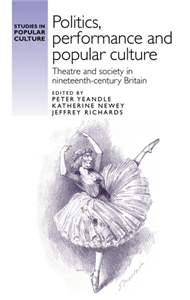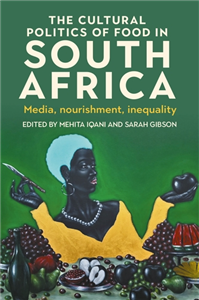Your Search Results
-
Promoted ContentTechnology, Engineering & AgricultureNovember 2023
Farmer Innovations and Best Practices by Shifting Cultivators in Asia-Pacific
by Malcolm Cairns
This book, the third of a series, shows how shifting cultivators, from the Himalayan foothills to the Pacific Islands, have devised ways to improve their farming systems. Using case studies collected over many years, it considers the importance of swidden agriculture to food security and livelihoods, and its environmental significance, across multiple cultures, forest and cropping systems. There is a particular focus on soil fertility and climate change challenges. It is a 'must read' for those who realize that if the lives of shifting cultivators are to be improved, then far more attention needs to be directed to the indigenous and often ingenious innovations that shifting cultivators have themselves been able to develop. Many of these innovations and best practices will have strong potential for extrapolation to shifting cultivators elsewhere and to farming systems in general. This book: - Highlights innovations of shifting cultivators. - Combines solid science with accessible language and outstanding artwork. - Provides a collection of case studies unprecedented in its scope. This book will be suitable for students and researchers of agriculture, anthropology, sociology, agricultural economics, human ecology, ethnobotany, forestry, agroforestry, agronomy, soil science, farming systems, geography, environmental science and natural resource management.
-
Promoted Content
-
 Trusted Partner
Humanities & Social SciencesDecember 2017
Trusted Partner
Humanities & Social SciencesDecember 2017Selected Works of Culture and History in Hunan
Volume 5
by Hunan Research Institute of Culture and History
The book is divided into several parts, such as the study of Hunan culture, historical stories, Hunan famous characters, folk customs, appreciation of scenery in Hunan, Hunan art and literature, etc., to show Hunan's history, culture and events from different perspectives. The book is supported with theories, historical materials, and also is of interest. It is of positive significance to the advancement of the research and development of Hunan culture.
-
 Trusted Partner
Humanities & Social SciencesMarch 2017
Trusted Partner
Humanities & Social SciencesMarch 2017Rethinking settler colonialism
History and memory in Australia, Canada, Aotearoa New Zealand and South Africa
by Annie Coombes
Rethinking settler colonialism focuses on the long history of contact between indigenous peoples and the white colonial communities who settled in Australia, Aotearoa New Zealand, Canada and South Africa. It interrogates how histories of colonial settlement have been mythologised, narrated and embodied in public culture in the twentieth century (through monuments, exhibitions and images) and charts some of the vociferous challenges to such histories that have emerged over recent years. Despite a shared familiarity with cultural and political institutions, practices and policies amongst the white settler communities, the distinctiveness which marked these constituencies as variously, 'Australian', 'South African', 'Canadian' or 'New Zealander', was fundamentally contingent upon their relationship to and with the various indigenous communities they encountered. In each of these countries these communities were displaced, marginalised and sometimes subjected to attempted genocide through the colonial process. Recently these groups have renewed their claims for greater political representation and autonomy. The essays and artwork in this book insist that an understanding of the political and cultural institutions and practices which shaped settler-colonial societies in the past can provide important insights into how this legacy of unequal rights can be contested in the present. It will be of interest to those studying the effects of colonial powers on indigenous populations, and the legacies of imperial rule in postcolonial societies.
-
 Trusted Partner
Humanities & Social Sciences
Trusted Partner
Humanities & Social SciencesGrandmothers Wisdom
by Vandana Shiva
Living Portrayals from the International Council of Thirteen Indigenous Grandmothers Grandmothers’ Wisdom is a vibrant tribute to the lives of thirteen indigenous Grandmothers who came together to protect our planet in crisis and envision a future for the next seven generations. These remarkable wisdom keepers of traditional medicine and Indigenous spirituality, preserve the ancient wisdom traditions and traditional ecological knowledge that have served our planet Earth for millennia. This special work is a living portrayal of their upbringing, encounters with the violence of colonialism and forced assimilation, their awakening to fierce activism, and the ceremonial practices they carry forward from their lineages with tenacity, grace and devotion.
-
 Trusted Partner
Children's & YANovember 2023
Trusted Partner
Children's & YANovember 2023The Rights of Indigenous Peoples Explained
by Summer Okibe
Hey Child, I am excited to simplify the United Nations Declaration on the Rights of Indigenous Peoples (UNDRIP) for you. You are special and you deserve to know that the Indigenous People around you have rights. You should, at all times, respect and acknowledge their rights.
-
 Trusted Partner
Literary Fiction2022
Trusted Partner
Literary Fiction2022Dying in the South
by Gabriel Velazquez Toledo
In 1993, journalist Santiago Moreno investigates a series of similar murders in Chiapas, in the South of Mexico, when he finds a new one that does not fit in with the patern. Following the lead, he is sent to the jungle where he finds groups of indigenous people protesting and organizing themselves. Step by step the plot goes knitting both stories into one, and towards the end we see the emergence of the Zapatista movement, on January 1st 1994.
-
Aquaculture & fish-farming: practice & techniquesFebruary 2021
Breeding and Culture of Freshwater Ornamental Fish
by Archana Sinha & Pramod Kumar Pandey
The Book Breeding and Culture of Freshwater Ornamental Fish deals with recent scenario and technology of freshwater ornamental fish. The book contains 15 chapters including FAQ and suggested readings. The book covers in depth subjects such as status, breeding techniques, food and health management and marketing of freshwater ornamental fishes. There is a separate chapter on breeding of indigenous freshwater ornamental fishes. Emphasis is given on national and international legislation related to ornamental fish export and import. The book contains a useful chapter on the importance and role of ornamental plants and accessories. Aquarium making and decoration is well explained for a hobbyist. Water quality management and maintenance of aquarium have been dealt in great detail by the author as those are the important components of aquarium keeping. Packaging and transport of these fishes are dealt with proper explanation with view to promote proper trade of the ornamental fishes. Author has highlighted the behaviour and biology of important fishes and tried to link these aspects with captive management practices. FAQ and Suggested readings addvalues to the book, as they address many curiosities of the readers. The way chapters are presented in the book, it makes it quite interesng and relevant to the present scenario. Photographs are very aracve.Students, sciensts, academicians, hobbyists and entrepreneurs will certainly enjoy and would be greatly bene?ted and enriched by reading this interesng and well wrien book as it addresses the concerns of each of them.
-
 Trusted Partner
Forestry & related industriesDecember 2007
Trusted Partner
Forestry & related industriesDecember 2007Indigenous Fruit Trees in the Tropics
Domestication, Utillization and Commercialization
by Edited by Festus K Akinnifesi, Roger RB Leakey, Oluyede C Ajayi, Gudeta Sileshi, Zac Tchoundjeu, Patrick Matacala, Freddie R Kwesiga
It has been recognized that an important factor in improving the viability of rural livelihoods in developing countries is the promotion of sustainable agriculture. As opposed to relying solely on cash crops, this can be more easily achieved through the domestication of various indigenous fruit trees that can be cultivated and owned by smallholder farmers. Through multi-functional and integrated farming systems, these tree crops can support environmental and social sustainability by providing food as well as promoting economic growth. Twenty years ago, little was known about the biology, ecology or the social impact of indigenous fruit trees on rural populations. Since then, new concepts and approaches have been developed, case studies have been produced and the potential and feasibility of their domestication and commercialization has been explored. This focused study on the tropics brings together a comprehensive review of this research.
-
 Trusted Partner
MedicineJuly 2022
Trusted Partner
MedicineJuly 2022Handbook of Phytonutrients in Indigenous Fruits and Vegetables
by Dharini Sivakumar, Michael Netzel, Yasmina Sultanbawa
The effects of inadequate diets on the population include malnutrition, non-communicable diseases and obesity. 'Hidden hunger', also known as micronutrient deficiencies, leads to various health-related disorders and diseases. Indigenous plants, in the form of indigenous fruits and leafy vegetables are gaining interest as a source of nutrients and bioactive phytochemicals, satisfying both food demand and health needs. Moreover, with the impact of climate change, and the importance of sustainability of food systems, it is essential that we investigate new, forgotten and alternative crops that can thrive in harsh conditions, require low fertilizer input, and are easily harvestable. This book contains chapters on 33 understudied indigenous fruits and vegetables from all around the world, including African nightshade, amaranth, baobab fruit, Indian gooseberry, red bush apple and snake melon. Each chapter provides: An overview of plant botany. An understanding of the phytonutrient constituents and health-promoting properties of bioactive compounds or metabolites. Information on the biological activity of the functional compounds that will improve productivity and increase utilization of indigenous fruits and vegetables to sustain food security. Impacts of postharvest storage, processing, and traditional food preparation methods. Potential for new product development. This is an essential resource for academic researchers and industry professionals in the fields of horticulture, agriculture, crop science, human health and nutrition.
-
 Trusted Partner
Humanities & Social SciencesJuly 2018
Trusted Partner
Humanities & Social SciencesJuly 2018Savage worlds
German encounters abroad, 1798–1914
by Matthew Fitzpatrick, Peter Monteath
With an eye to recovering the experiences of those in frontier zones of contact, Savage Worlds maps a wide range of different encounters between Germans and non-European indigenous peoples in the age of high imperialism. Examining outbreaks of radical violence as well as instances of mutual co-operation, it examines the differing goals and experiences of German explorers, settlers, travellers, merchants, and academics, and how the variety of projects they undertook shaped their relationship with the indigenous peoples they encountered. Examining the multifaceted nature of German interactions with indigenous populations, this volume offers historians and anthropologists clear evidence of the complexity of the colonial frontier and frontier zone encounters. It poses the question of how far Germans were able to overcome their initial belief that, in leaving Europe, they were entering 'savage worlds'.
-
 Trusted Partner
Humanities & Social SciencesFebruary 2023
Trusted Partner
Humanities & Social SciencesFebruary 2023Politics, performance and popular culture
Theatre and society in nineteenth-century Britain
by Peter Yeandle, Katherine Newey, Jeffrey Richards
This collection brings together studies of popular performance and politics across the nineteenth century, offering a fresh perspective from an archivally grounded research base. It works with the concept that politics is performative and performance is political. The book is organised into three parts in dialogue regarding specific approaches to popular performance and politics. Part I offers a series of conceptual studies using popular culture as an analytical category for social and political history. Part II explores the ways that performance represents and constructs contemporary ideologies of race, nation and empire. Part III investigates the performance techniques of specific politicians - including Robert Peel, Keir Hardie and Henry Hyndman - and analyses the performative elements of collective movements.
-
 Trusted Partner
Sport & leisure industriesAugust 2006
Trusted Partner
Sport & leisure industriesAugust 2006Indigenous Ecotourism
Sustainable Development and Management
by Heather D Zeppel
Dealing with indigenous ecotourism as a special type of nature-based tourism, Indigenous Ecotourism examines the key principles of this field through global case studies and analyses the key factors for sustainable development.
-
 Trusted Partner
Humanities & Social SciencesMarch 2026
Trusted Partner
Humanities & Social SciencesMarch 2026The cultural politics of food in South Africa
Media, nourishment, inequality
by Mehita Iqani, Sarah Gibson
Food is both a material system of nourishment, necessary for human survival, and a communicative system that signifies multiple meanings across human cultures. This book explores the cultural politics of food in the South African context, bringing together a range of disciplinary perspectives on the links between media, nourishment, and inequality. The chapters all highlight the multiplicity of meanings that food has in South African society. These include historical perspectives on the impact of colonialism, migration and apartheid had on food and foodways in South Africa; sociological interventions on food and society; aesthetic practices in relation to food; and mediated food cultures in South Africa. Taken together, the book critically explores the multiple ways in which food is never just food, and always linked to complex and shifting modalities of meaning and knowledge in the South African context.
-
Agriculture & farmingJanuary 2014
Ancestral Knowledge in Agri-Allied Science
by Ratan Kumar Saha
Indigenous knowledge is the knowledge of the indigenous people inhabiting different geographical regions of the world with their own language, culture, tradition, belief, folklore, rites and rituals. Indigenous knowledge so developed is based on necessities, instinct, curiosity and observations of ethnic groups to mitigate the immediate situations. Eventually, this local knowledge in course of time gets socially accepted and validated which finally inters into the social life and subsequently become the Indigenous Traditional Knowledge (ITK) of the society as a whole. As such, scientist in this knowledge base economy who are in research of new ideas and innovations expect that indigenous knowledge may hold significant message which may be of use to remedy the deficiencies in modern agricultural and environment related issues. There is a need for studying and documenting traditional knowledge in different ecological and cultural environments. Several researchers are working on ITK in different fields of agriculture and allied sectors. There is a demand for a standard book on the overview of ITK. This book is designed in such a way that will give an overview of ITK, the differences between Science & ITK, different tools and techniques used in ITK, classification, importance & utilization of ITK, and recent ongoing researches on ITK in different parts of India. The objective of this book is to encourage the study of ethnic knowledge in different field of agriculture and allied sector. It is also an attempt to circulate amongst a larger group of readers regarding the importance of indigenous knowledge in scientific world. This book will, perhaps, be well received in all the Agricultural Universities, Animal Husbandry & Fisheries University, State Govt. Agri-allied Departments, Private and Public Sector Institutions where training, teaching, research and extension of agri-allied sector is undertaken.
-
 Trusted Partner
August 2011
Trusted Partner
August 2011From South to North:Back to North
by Yue Nan
This is an epic book depicting the Chinese scholars of the last century in a panoramic manner. The book’s time span is nearly one century, involving most of Chinese master scholars, such as Cai Yuanpei, Wang Guowei, Liang Qichao, Mei Yiqi, Chen Yinke and Qian Zhongshu. In the book, Yue makes an extensive investigation and revelation. It will help the reader broaden their minds and make them mediate that period in sigh. The book is rewarded as one of ten best non-fiction books in 2011 by Asian Weekly. Mao Yushi, He Liangliang, Li Guoqing, Yu Shicun, Zhang Yiwu and Nobel Prize winner Mo Yan recommended the book. CCTV and Peking University had decided to make a big TV series.
-
 Trusted Partner
August 2011
Trusted Partner
August 2011From South to North:Say Goodbye
by Yue Nan
This is an epic book depicting the Chinese scholars of the last century in a panoramic manner. The book’s time span is nearly one century, involving most of Chinese master scholars, such as Cai Yuanpei, Wang Guowei, Liang Qichao, Mei Yiqi, Chen Yinke and Qian Zhongshu. In the book, Yue makes an extensive investigation and revelation. It will help the reader broaden their minds and make them mediate that period in sigh. The book is rewarded as one of ten best non-fiction books in 2011 by Asian Weekly. Mao Yushi, He Liangliang, Li Guoqing, Yu Shicun, Zhang Yiwu and Nobel Prize winner Mo Yan recommended the book. CCTV and Peking University had decided to make a big TV series.
-
 Trusted Partner
August 2015
Trusted Partner
August 2015From South to North:Go to South
by Yue Nan
This is an epic book depicting the Chinese scholars of the last century in a panoramic manner. The book’s time span is nearly one century, involving most of Chinese master scholars, such as Cai Yuanpei, Wang Guowei, Liang Qichao, Mei Yiqi, Chen Yinke and Qian Zhongshu. In the book, Yue makes an extensive investigation and revelation. It will help the reader broaden their minds and make them mediate that period in sigh. The book is rewarded as one of ten best non-fiction books in 2011 by Asian Weekly. Mao Yushi, He Liangliang, Li Guoqing, Yu Shicun, Zhang Yiwu and Nobel Prize winner Mo Yan recommended the book. CCTV and Peking University had decided to make a big TV series.
-
 Trusted Partner
August 2013
Trusted Partner
August 2013Hunan Culture Textbook
by Xuande WEN, Fulong TIAN
Exploring from the origin of Hunan culture, this book explains the philosophy,education,cultures,arts,science&technology,traditions,religions,customs and talents of Hunan Province step by step,which introduce Hunan culture comprehensively and systematically.
-
 Trusted Partner
Children's & YA
Trusted Partner
Children's & YAOikoá
by Felipe Valério
The name of this book is Oikoá, which means life in the language of the Guarani Mbya people. This name was chosen because the indigenous peoples have been the guardians of life on planet Earth: it is in their territories that there are more types of trees and plants, animals, fish, birds, insects, and where the rivers and forests are best preserved.


































